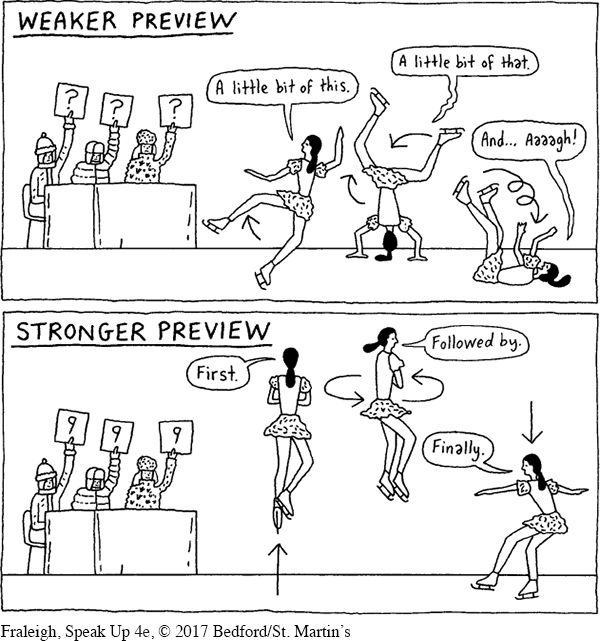Preview Your Main Points
A preview is a brief statement of the main points you will be developing in the body of your speech. It lets your audience members know what main ideas to expect and helps them visualize the structure of your speech—
To differentiate the main points in your preview, include signposts (for example, first, next, and finally) to help your audience grasp the structure of your speech. Also, avoid the use of and or other connecting words while previewing a single main point.
Consider the two previews on the next page, which Alexandra might use in her speech about judging competitive ice skating.

Page 293
WEAKER PREVIEW
The rules of judging and the ways you can judge, along with the many controversies about Olympic judges, are all interesting aspects of judging competitive skating.
STRONGER PREVIEW
Today we’ll look at three major topics about judging competitive ice skating: first, we’ll look at rules for judging a skating event; then, I’ll share some tips you can use to score the performances yourself; and finally, I’ll discuss some of the judging controversies that have occurred at past Olympics.
Both of these previews offer information about the main points to be developed. However, the first preview is much less explicit than the second. It mentions the three points Alexandra plans to cover but runs them together in a single clause. This doesn’t help the audience understand the structure of the speech. This preview also contains no hints indicating that Alexandra is previewing her main points. This statement could just as easily be an attempt to connect with the audience. By contrast, the strong second preview clearly signals the speech structure, making it easy for Alexandra’s audience to recognize the main points and the sequence in which she will cover them.
To watch a preview in a speech about groundbreaking cancer treatments, try Video Activity 10.2, “Attention-Getter, Support, Creative Preview.”